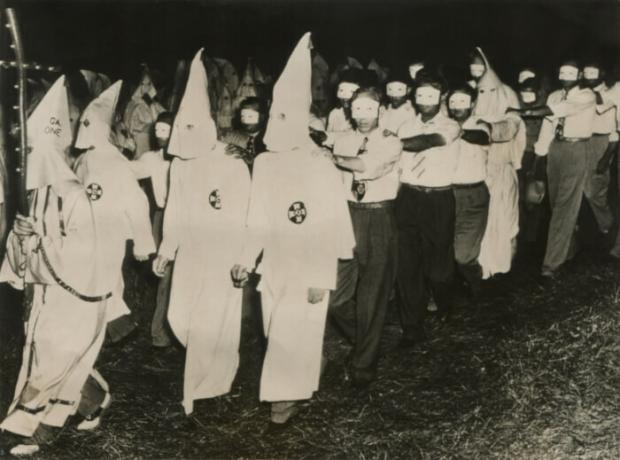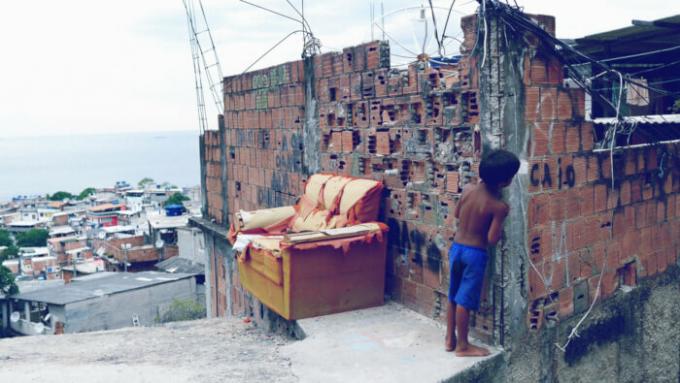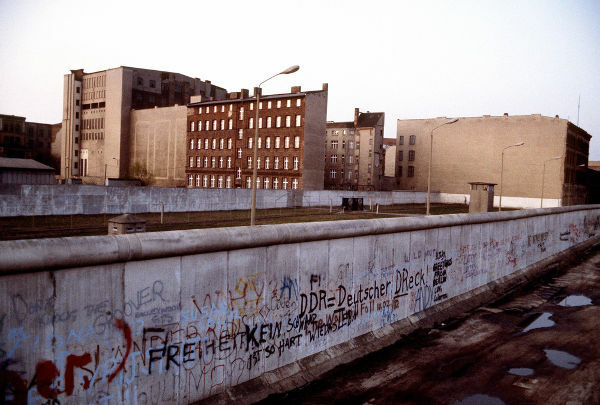Racism is the name of discrimination and prejudice (directly or indirectly) against individuals or groups because of their ethnicity or color. It is important to emphasize that prejudice is a form of concept or judgment formulated without any knowledge prior to the subject matter, while discrimination is the act of separating, excluding or differentiating people or objects.
Read too: Human Rights: what they are, articles and how they came about
Types of racism
→ Prejudice and racial discrimination or racial hate crime
In this direct form of racism, an individual or group manifests itself physically or verbally against others individuals or groups due to ethnicity, race or color, as well as denying access to basic services (or not) and places by them reasons. In this case, law 7716 of 1989 of the Brazilian Penal Code provides for punishments to those who commit such a crime.
→ institutional racism
Less directly, institutional racism is the manifestation of prejudice by institutions public or private, state and laws that indirectly promote exclusion or prejudice racial. We can take as an example the ways in which police officers approach blacks, which tend to be more aggressive. This can be seen in the
Charlottesville cases, in Virginia (USA), when after successive murders of unarmed and innocent blacks by police whites, who claimed the strict fulfillment of duty, the local population revolted and promoted a series of protests.→ Structural racism
Even softer and for a long time imperceptible, this form of racism tends to be even more dangerous because it is difficult to perceive. It is a set of practices, habits, situations and speeches embedded in our customs and that directly or indirectly promote segregation or racial prejudice. We can take as examples two situations:
1. O black and indigenous access to places that were, for a long time, exclusive spaces of the elite, such as universities. The number of blacks who had access to higher medical courses in Brazil before the quota laws it was negligible, while the black population was mostly related to lack of access to schooling, poverty and social exclusion.
2. Pejorative speeches and habits incorporated into our daily lives tend to reinforce this form of racism, as they promote exclusion and prejudice, even if indirectly. This form of racism manifests itself when we use racist expressions, even if due to ignorance of its origin, such as the word "denigrate”. It also happens when we make jokes that associate blacks and indigenous people with vexatious, degrading or criminal situations, or when we distrust someone's nature because of their skin color. Another form of structural racism that is widely practiced, even without offensive intent, is the adoption of euphemisms to refer to black or black, like the words “brown” and “person of color”. This attitude shows people's discomfort, in general, when using the words “black” or “black” due to the social stigma that the black population has received over the years. However, being black or black is not a reason for shame, on the contrary, it should be seen as a reason for pride, which undermines the need to “soften” ethnic denominations with euphemisms.
Read too: The Black Panthers and the racial struggle in the USA
racism and prejudice
we can't summarize preconception The racism, as prejudice can arise from several other differences, such as gender, place of origin and sexual orientation. However, racism is a form of prejudice and, like other forms, it manifests itself in different ways, making victims every day.
According to the Revista Retratos, a section of the IBGE News Agency website, linked to the Federal Government, in the sense of the IBGE 2016, the self-declared black or brown they were still the majority in the illiteracy and unemployment rates and had lower monthly income. This implies, according to the website, the maintenance of an exclusionary system, which could only be resolved, according to Prof. Dr. Otair Fernandes, sociologist and coordinator of the Laboratory of Afro-Brazilian and Indigenous Studies at the Federal Rural University of Rio de Janeiro (Leafro/UFRRJ), with the adoption of affirmative public policies to value those who have been systematically marginalized and excluded from society for so long time. In this case, more than individual attitudes (of awareness) would be needed, but an action of public authorities to promote policies of inclusion and non-exclusion of blacks and browns in the Brazil.
O racial prejudice it is not exclusive to Brazil, since, to a greater or lesser extent, all colonizing and colonized countries have, to some degree, indices of racial prejudice against blacks or, in the case of colonized countries, natives from that place. It is also important to emphasize that an action of prejudice is only considered racist when there is a systemic use and based on a structure of power and domination against the victim's ethnicity.
Read too: Femicide: what is it, law, cases in Brazil and types
Causes of racism
Discrimination by origin can be traced back to antiquity, when Greek and Latin people classified foreigners as barbarians. The origin of the designation of race prejudice, in particular, is younger, having been leveraged in the 16th and 17th centuries by the maritime expansion and colonization of the American continent. The domination of the “new world” (so called by the Europeans), the genocide of the native peoples and the enslavement systems of African peoples generated a movement to attempt to justify such power relations by a supposed hierarchy of races.
Europeans considered, in their eurocentric vision, that people of native European origin would be more intelligent and able to dominate and prosper, while blacks and indigenous peoples were often considered animals.
In the nineteenth century, with the positivist impulse on science, racist scientific theories emerged to try to rank the races and prove the pure white race superiority. The French philosopher, diplomat and writer Arthur de Gobineau (1816-1882) is one of the most outstanding in this scenario with his Essay on the Inequality of Human Races.
A study based on anthropology, physiology and psychology also appeared in the 19th century called craniometryor craniology. This study consisted of taking measurements from the skulls of individuals and comparing the measurements with data such as propensity to violence and intelligence coefficients. Today, however, serious studies on both a sociological and psychological and a genetic basis no longer give credence to the racist theories of the last century. O Nazism German and entities like the Klu Klux Klan, in the United States, used and use these outdated racial theories to justify the supremacy of the white race.

Ku Klux Klan men with new limbs wearing face masks at Stone Mountain, near Georgia, USA, in 1949.
In Brazil, the causes of racism can be mainly associated with the long enslavement of peoples of African origin and the late abolition of slavery, which was carried out in a irresponsible, as it did not bother to insert freed slaves into education and the labor market, resulting in a system of marginalization that it lasts until today.
Read too:Was Nazism on the left or on the right?
racism in Brazil
when the Golden Law was promulgated on May 13, 1888, the enslavement of people within Brazilian territory was prohibited. Brazil was the last great western country to extinguish slavery and, as happened in most other countries, a system of public policies was not created to insert the freed slaves and their descendants in society, guaranteeing this population human rights, such as housing, health and food, in addition to formal study and positions in the market of work.
The newly freed slaves went to inhabit places where no one wanted to live, such as the hills, on the coast of the Southeast Region, forming the shanty towns. No job, no decent housing and no basic conditions for survival, the end of the 19th century and the first half of the 20th century in Brazil were marked by misery and its resulting violence between the black population and marginalized.
As for the indigenous population surviving the genocide carried out against their people, their lands were increasingly invaded and their villages dismembered. These systemic actions have promoted and sustain the racial exclusion in our country, which resulted in several sociological studies. Among them, we highlight the studies of two Brazilian thinkers:

Favelas support the idea of racial and social exclusion from the abolition of slavery to the present day.
→ Gilberto Freyre (1900-1987)
The historian, sociologist and writer from Pernambuco, from a rich and traditional family, wrote the first great Brazilian work that deals with the relations between masters and slaves in the colonial and imperial period in Brazil, the book Casa Grande and Senzala, published in 1936. Despite the great prominence that Freyre's writings gained in Brazilian sociology, their central theories are much criticized for speaking of a supposed national formation based on a racial democracy existing in the relations between blacks and whites.
Freyre does not use the term “racial democracy” in Casa Grande and Senzala, but describes friendly relations between whites and blacks. based on the miscegenation of the Brazilian people, an uncommon feature in other countries that had slaves of origin African. The author talks about a power relations system clear in the colonial period, in which the patriarchal society favored men, including in the case of slavery, as black women would be the last in the hierarchical chain.
When the master chose the slaves with whom he wanted to have a relationship, and this was common, the ladies ended up taking a grudge against these slaves and mistreating them. Thus, Freyre's vision of a democracy through miscegenation it does not hold up, because, according to Ronaldo Vainfas, a Brazilian historian and professor, it is “to see that the Portuguese felt sexually attracted to Indian women, black women and mulatto women that Freyre mistakenly deduces is the absence of racial prejudice between them. colonizers".
This miscegenation, the result of that supposed sexual attraction of the colonizers for the black women and the Indian women, was, in fact, the cause of systemic rapes and abusive relations of the lords, treating black and indigenous women as mere objects.
Talking about the idea of hegemony and white race superiority, ideology on the rise in Europe because of the Nazi regime, fascism in Italy and with echoes even here in Brazil, with Integralism, Freyre still argues against, saying that the miscegenation would bring about racial improvement, which would result in the genetic improvement and enrichment of Brazilians and which would make up the great diversity of social formation. Brazilian.
Read too: Neonazism: what it is, origin, in Brazil and more
A sociologist and politician from São Paulo, graduated from the University of São Paulo (USP), Florestan Fernandes came from a humble family. Son of a single mother and having had to work since childhood, his intellectual production turned, at various times, to people of his social origin. Critic of the ideas of Gilberto Freyre, Fernandes dedicated himself to studying the relations between misery and the black population in Brazil.
Her thesis for professorship, defended at the University of São Paulo and entitled The Integration of Blacks in Class Society, it deals with systemic racism and the persistent segregation of blacks in the Brazilian economy, which, in the thinker's view, began with slavery and was never overcome.
Florestan Fernandes' vision opens up space for criticism of the racial democracy proposed by Gilberto Freyre and opens the eyes of intellectuals and authorities on structural racism in Brazil. The fact is that there was, here, a very strong predominance of structural racism, for years imperceptible, while United States had an official race segregation system, which led to a major black uprising against the discrimination.
In the United States, personalities like Martin Luther King, Rosa Parks, Muhammad Ali and Malcolm X, in addition to radical movements like the black Panthers, fought, some using peaceful resistance and others using combat, against the segregation.

Illustration by Malcolm X, one of the leaders of the black movement in the United States, in the 1960s.
Racism crime law
In January 1989, the law nº 7716, which classifies as a crime any manifestation, direct or indirect, of segregation, exclusion and prejudice with racial motivation. This law represents an important step in the fight against racial prejudice and provides penalties of one to three years of imprisonment for those who commit crimes of hate or racial intolerance, such as denying employment to people by their race or access to educational institutions and public or private establishments open to the public. When the crime of incitement occurs in the media, the penalty can reach five years. This law also makes it a crime to manufacture, publicize and sell the Nazi swastika for racial prejudice purposes.
Since 2015, a bill by the then Senator of the Republic Paulo Paim has been in the National Congress. (PT – RS) which modifies the Brazilian Penal Code, making racism an aggravating factor for other crimes. If implemented, the bill will result in harsher penalties for crimes of bodily harm and murder when these result from racial hatred and prejudice.
Read too: Malcolm X, one of the top African American rights activists in the US
reverse racism
Lately, a discussion that has raised divergent opinions on social media and the media in general is whether or not there is a so-called reverse racism. Reverse racism would be the classic form of prejudice motivated by race, color or ethnicity, however, against whites, or blacks against whites. Those who agree with this position tend to use it as a defense, claiming that black people often weave racist offenses against white people. To clarify this issue, we need to note a few points.
First, what is considered racism goes far beyond verbal insults. We have a long process of segregation, often institutionalized, which maintains a chain of exclusion of blacks from society, from education and economics, which, in most cases (including South Africa, a country with 40% of the white population), are dominated by whites.
Second, you need to take into account the historical factors. Blacks were systematically enslaved, treated like animals and, after the abolition of slavery in Western countries, excluded and marginalized. This means to say that there is a chain of historical factors that make prejudice and hatred against blacks (and against Indians, who have lived in similar situations) racism.
There have even been scientific attempts to justify this practice. However, there has never been a time in modern and contemporary history when whites were enslaved by blacks, treated like animals and socially and economically marginalized. Therefore, it is difficult to treat an isolated racial offense against white people with the same seriousness as racism against blacks and indigenous peoples. Furthermore, racism tends to be active, whereas what is called reverse racism, reactive, as it results from a racist system that has excluded non-white populations for years.
Anyway, the lesson we can take is that prejudice, discrimination and hatred against who is different (by color, religion, nationality or even sexual orientation) should not have more space in our society. The 21st century must seek progress, and prejudice only represents backwardness.
Read too: Slavery in Brazil: forms of resistance
racism at school
Unfortunately, racism still occurs within the school, and it can manifest itself clearly and explicitly or in a disguised way. We found cases of racial discrimination committed by students, by and servants of institutions and by parents of students against school workers. This type of direct manifestation of racism by institutions was common in older times, when the Racial discrimination was not a crime in Brazil or when official racial segregation was still happening – in the United States, for example.
In addition to explicit racism, cases of structural racism are still frequent in Brazilian school institutions. An example of this is discrimination against Afro haircuts or hairstyles, such as black power, both for black girls and boys. Another example is the manifestation of racial prejudice through the religious intolerance, when practiced against religions of African origin.

Discrimination against black haircuts can be common in schools.
in your book Liability and Judgment, the German Jewish philosopher, refugee and uprooted in the United States, Hannah Arendt, writes a chapter called Reflections on Little Rock, dedicated to commenting on an event that occurred in the city of New Orleans, in 1960. the little student Ruby Bridges, who at just six years of age was one of six black children approved to study in schools attended only for whites in New Orleans, suffered from prejudice at school, which, until then, was exclusive to people white.
The community was against it, and many students and students' families threatened Ruby's family. Students dropped out of school, and nearly all the teachers refused to teach Ruby, with the exception of teacher Barbara Henry, who would have taught the little girl alone for more than a year.
Dwight Eisenhower, president of the United States who contributed significantly to the end of racial segregation in schools and forces American armed forces, appointed four federal agents who were responsible for looking after Ruby's security at its inception. school. The police accompanied the girl on the way from home to school and still had to take care of her safety inside the school. For a long time, as a safety measure, Ruby ate only the food brought from home to avoid possible poisoning if she ate the snack offered by the institution.
Read too: How was the life of ex-slaves after the Golden Law?
cases of racism
Cases of racism caught the attention of Brazilians because they involved famous people or were shared on social media. We can highlight the case of spider goalkeeper, then Santos player, who in 2014 was called “monkey” by several Grêmio fans after the team suffered defeat in a match in the Copa do Brasil. The case was filmed, legal measures were taken, and Grêmio was expelled from the Copa do Brasil.
There was also, in 2015, an occurrence of racial discrimination in a brand store located on Rua Augusta, in São Paulo, in which a black boy, adopted son of a white customer, heard from the attendant that he should leave and could not stay there (on the sidewalk, near the store entrance).
Unfortunately, racism is recurrent, and this negative notoriety of certain cases still represents a small portion of Brazilian racism. In these cases, the victims were only recognized, supported and raised public opinion against the racial discrimination because there were people educated and supported by a social status that allowed them to have voice. And the cases of racism that will never appear in the media? And the cases of people offended, discriminated against, raped and killed, in the peripheries and interiors, by representatives of the State and by civilians? These cases are still numerous and should also draw popular attention.
*Image credit: EQRoy / Shutterstock.com
by Francisco Porfirio
Sociology Professor



